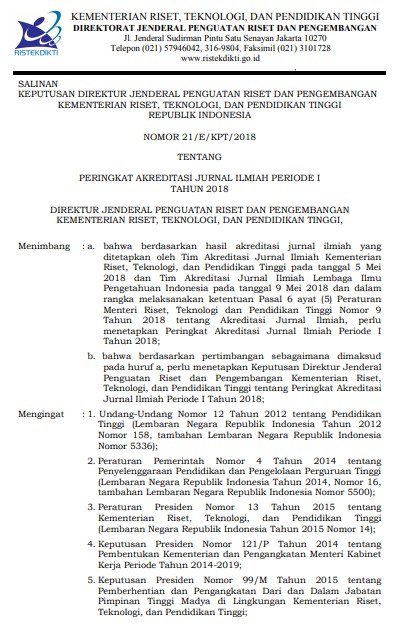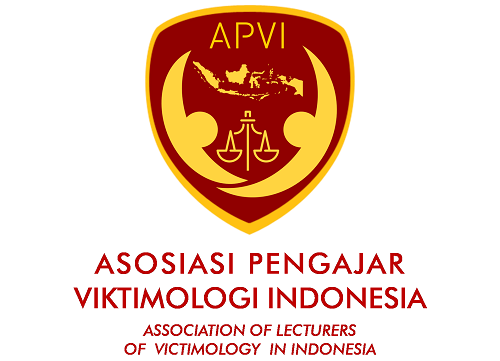The Right to be Forgotten as Protection for Children Victims of Non-Consensual Pornography Crime
Abstract
Revenge porn refers to the distribution of sexually explicit images without the consent of the pictured individual, in most cases, this happens when someone decides to end the relationship with their partner, the partner who refused their decision then threatens to spread their sexually explicit images on the internet. So far, the existing legal system only accommodates aspects of criminal prosecution for non-consensual pornography offenders. However, if we conduct further observation, the protection that is most needed by the victims is how to reduce the negative impact of this which can harm their future. The right to forget is a right that gives a person the right to delete their data from search engines and other directories under certain circumstances. In a general context, this right is still problematic to adopt because it can threaten the rights for freedom of speech. However, in the context above, this right may be important to be applied for the protection of someone against mistakes made under the age of age. Convention on the Rights of the Child articles 16 & 40 (2) (b) (vii) as explained by the children's rights committee in General comment no. 10 (2007) on Children's rights in juvenile justice in the “Full respect of privacy” section guarantees the rights of child perpetrators of criminal offenses to be kept secret, even in the Beijing rules article 21.1 & 21.2 regulate to avoid stigmatization and/or prejudice or to increase penalties then the record of child offenders is not may be used in subsequent cases when the child is an adult.
Keywords: child porn; human rights; nonconsensual pornography; porn revenge; right to be forgotten
Full Text:
PDF View
References
Broberg, Morten. & Sano, Hans Otto. (2017). Strenghts and Weaknesses in a human rights- based approach to international development-an analysis of a rights-based approach to development assistance based on practical experiences. The International Journal of Human Rights. 22(5). 664-680. https://doi.org/10.1080/13642987.2017.1408591.
Bueren, Van. Geraldine. (1998). The International Law on the Rights of the Child. Leiden: Martinus Nijhoff Publishers.
Citron, Danielle Keats. (2014). Hate Crimes in Cyberspace. Harvard University Press. Accessed August 26, 2020. http://www.jstor.org/stable/j.ctt7zsws7.
Citron, Danielle. Keats., & Franks, Mary Anne. (2014). Criminalizing Revenge Porn. Wake Forest Law Review. 49. 345+.
European Parliament and Council of European Union (2016) Regulation (EU) 2016/679. Available at: https://eur-lex.europa.eu/legalcontent/EN/TXT/HTML/?uri=CELEX: 32016R0679&from=EN (Accessed:26 Augustust 2020).
Filipas, H. H., & Ullman, S. E. (2006). Child Sexual Abuse, Coping Responses, Self-Blame, Posttraumatic Stress Disorder, and Adult Sexual Revictimization. Journal of Interpersonal Violence. 21(5), 652–672. https://doi.org/10.1177/0886260506286879.
Friedrich, William. N., et all. (2001). Child Sexual Behavior Inventory: Normative, Psychia- tric, and Sexual Abuse Comparisons. Child Maltreatment. 6(1). 37-49. https://doi. org/10. 1177%2F1077559501006001004.
Henry, N., & Powell, A. (2015). Beyond the ‘sext’: Technology-facilitated sexual violence and harassment against adult women. Australian & New Zealand Journal of Criminology. 48(1), 104–118. https://doi.org/10.1177/0004865814524218.
Henry, N., & Powell, A. (2016). Sexual Violence in the Digital Age: The Scope and Limits of Criminal Law. Social & Legal Studies. 25(4), 397–418. https://doi.org/10.1177/0964663 915624273.
Kilkelly, Ursula., & Liefaard, Ton. (2019). International Human Rights of Children. Singapore: Springer Singapore.
Komnas Perempuan. (2018). Tergerusnya Ruang Aman Perempuan Dalam Pusaran Politik Populisme. Catatan Tahunan tentang Kekerasan Terhadap Perempuan. Jakarta: Komnas Perempuan.
Komnas Perempuan. (2019). Korban Bersuara, Data Bicara Sahkan RUU Penghapusan Kekerasan Seksual Sebagai Wujud Komitmen Negara. Catatan Tahunan tentang Kekerasan Terhadap Perempuan. Jakarta: Komnas Perempuan.
Komnas Perempuan. (2020). Kekerasan Meningkat: Kebijakan Penghapusan Kekerasan Seksual Untuk Membangun Ruang Aman Bagi Perempuan Dan Anak Perempuan. Catatan Tahunan tentang Kekerasan Terhadap Perempuan. Jakarta: Komnas Perempuan.
Meadow, Carrie Menkel. (2007). Restorative Justice: What is it and Does it Work?. Annual Review of Law and Social Science. 3. 161-187. https://doi.org/10.1146/annurev.lawso csci.2.081805.110005.
Mullers, Evelyn. Sybille., & Dowling, Maura. (2013). Mental Health consequences of Child Sexual Abuse. British Journal of Nursing. 17(22). 1428-1433. https://doi.org/10.12968/bjon.2008.17.22.31871.
Putman, F. W. (2003). Ten-year research update review: Child sexual abuse. Journal of the American Academy of Child & Adolescent Psychiatry. 42. 269-278.
Reding, Viviane. Vice President, Eur. Comm’n, The EU Data Protection Reform 2012: Making Europe the Standard Setter for Modern Data Protection Rules in the Digital Age 5 (Jan. 22, 2012), available at http://europa.eu/rapid/pressReleasesAction.do? reference=SPEECH/12/26&format=PDF.
Saunders, B. E., Villeponteaux, L. A., Lipovsky, J. A., Kilpatrick, D. G., & Veronen, L. J. (1992). Child Sexual Assault as a Risk Factor for Mental Disorders Among Women: A Community Survey. Journal of Interpersonal Violence. 7(2), 189–204. https://doi. org/10.1177/088626092007002005.
Shoor, Emily Adams. (2014). Narrowing the Right to Be Forgotten: Why the European Union Needs to Amend the Proposed Data Protection Regulation. Brooklyn Journal of International Law. 39 (1). 487-519.
Smith, K. M. Rhona., et al. (2008). Hukum Hak Asasi Manusia. Yogyakarta: PUSHAM UII. Sohn, Louis. B. (1982-1983). The New International Law: Protection of the Rights of
Individuals Rather Than States. America University Law Review. 31(1).
The World Conference on Human Rights. (1993). Vienna Declaration and Programme of Action. UN General Assembly. A/CONF.157/23.
UN Committee on the Rights of the Child. (2011a). General comment No. 13: The right of the child to freedom from all forms of violence. CRC/C/GC/13.
UN Committee on the Rights of the Child. (2011b). General comment No. 25: Children’s
Rights in Relation to the Digital Encironment. CRC/C/GC/25.
UN General Assembly. (2001). Optional Protocol to the Convention on the Rights of the Child on the Sale of Children, Child Prostitution and Child Pornography. A/RES/54/263.
UN Human Rights Committee. (1988). CCPR General Comment No. 16: Article 17 (Right to Privacy), The Right to Respect of Privacy, Family, Home and Correspondence, and Protection of Honour and Reputation.
UN Human Rights Committee. (2004). General comment no. 31: The nature of the general legal obligation imposed on States Parties to the Covenant. 80. CCPR/C/21/Rev.1/ Add.13.
United Nations. (1969). Vienna Convention on the Law of Treaties. United Nations: Treaty Series. 1155. 331.
Weber, Rold. H., & Heinrich, Ulrike. I. (2012). Anonymization. London: Springer. https://doi.org/10.1007/978-1-4471-4066-5
Wells, Melissa., Finkelhor, David., Wolak, Janis., & Mitchell, Kimberly. (2004). Law Enforcement Challenges in Internet Child Pornography Crimes. Sex Offender Law Report. 5(4). 41-49.
Zuravin, S., Mcmillen, C., Depanfilis, D., & Risley-Curtiss, C. (1996). The Intergenerational Cycle of Child Maltreatment: Continuity Versus Discontinuity. Journal of Interper- sonal Violence. 11(3), 315–334. https://doi.org/10.1177/088626096011003001.
DOI: http://dx.doi.org/10.20884/1.jdh.2021.21.2.2845
Refbacks
- There are currently no refbacks.
JURNAL DINAMIKA HUKUM Indexed by :
 | Jurnal Dinamika Hukum | |
| Faculty of Law, Universitas Jenderal Soedirman | Copyright of Jurnal Dinamika Hukum | |
| Yustisia IV Building, Law Journal Center | ISSN 2407-6562 (Online) ISSN 1410-0797 (Print) | |
| Purwokerto, Central Java, Indonesia, 53122 | JDH is licensed under a Creative Commons Attribution 4.0 International License | |






